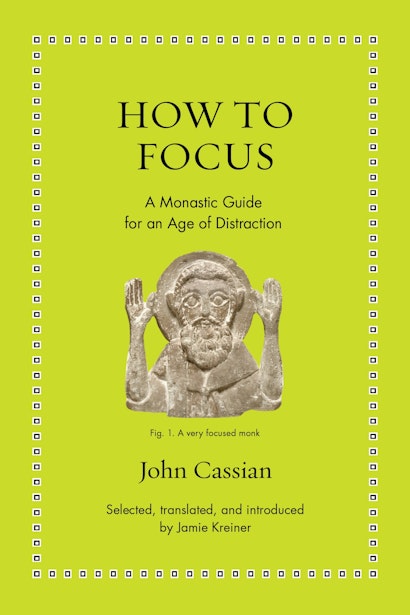There are all sorts of things we want to change for the better, but changing things on purpose is hard, and sometimes it’s a weird comfort to find that we humans have been complaining about the same problems for a very long time.
Take the struggle against distraction, which might seem utterly specific to the twenty-first century, but was in fact singled out as a crisis more than a millennium and a half ago. Early Christian monks sounded that alarm—not because they were masters of concentration, but because they believed that they were failures: they had done the wrenching, life-changing work of upending their lives in order to focus on God, and yet their minds were still finding ways to wander off.
Even the very best monks sometimes succumbed to distraction, but that didn’t make it any less serious. In fact, they saw the consequences of distraction as potentially fatal. The influential monk John Cassian compared it to cosmic tightrope walking: concentration on God would lead a soul to eternal life, but the mind’s missteps would send it careening to its death.
Cassian shared this metaphor in the early fifth century—not to make monks panic—but to encourage them to keep trying to focus. There is plenty more where that came from. His Collationes (Consultations) are structured as a series of visits to his monastic mentors in Egypt, and he and his best friend Germanus pepper them with questions about how to deepen their spiritual practice — above all, by disciplining their minds.
Cassian realizes in the course of these conversations that dealing with distraction meant confronting the complex conditions of thinking itself: the thoughts we think are affected by our surroundings, companions, bodies, memories, moods, and even by our reflexive ways of thinking about thinking itself. Given this ensemble of intertwined forces, dealing with distraction was an ongoing process rather than a single sure fix. That’s another lesson that Cassian renders sympathetically: just when he and Germanus think they’ve landed on a solution, they realize it’s not so simple. The more they learn, the more they see that the work is perpetual: as tautological and circular as it sounds, attentiveness is the only solution to distractedness. Fortunately, they do find strategies along the way to help themselves maintain that alertness of mind: distraction can’t ever be fully defeated, but it can at least be managed more expertly.
How to Focus represents the pieces of Cassian’s work that speak most directly to our present preoccupations with distraction. That’s not to say that early Christian monks are exactly like us. It can be easy to overlook historical differences when we’ve singled out what seems to have stayed the same. We might look at a statue and suppose that its ancient spectators saw the same thing—but that statue would have activated different associations for them, drawn on different wells of education and popular culture, pointed to different politics. And it would have been brightly colored! At the same time, early Christian monks compared their role models to statues—that’s how steady their concentration was seen to be—so the concept of a statue has at least remained stable enough for us to appreciate the simile.
That tension between continuity and change, between our identification with something and our sense of distance from it, runs throughout all historical artifacts and texts, including Cassian’s work. So for every uncanny moment of recognition that How to Focus offers, it’s also teeming with allusive quotations, crying monks, demons, and other things that may be harder for us to understand right away.
The historian and the translator share this tension in common: they try to make other worlds intelligible without collapsing them into simulacra of our own. Who wants to read about people who were exactly like us, anyway? That sounds tedious and totalizing. History is better and stranger: it’s propelled by the pleasure of unexpected recognition, by the frustration of understanding something only incompletely, and by the potential to see something in a new way thanks to that jarring juxtaposition. Cassian liked to describe spiritual energy as a fire that sometimes roared and sometimes flickered. History is a little bit like that.
Jamie Kreiner is professor of history at the University of Georgia and the author of The Wandering Mind: What Medieval Monks Tell Us About Distraction.

